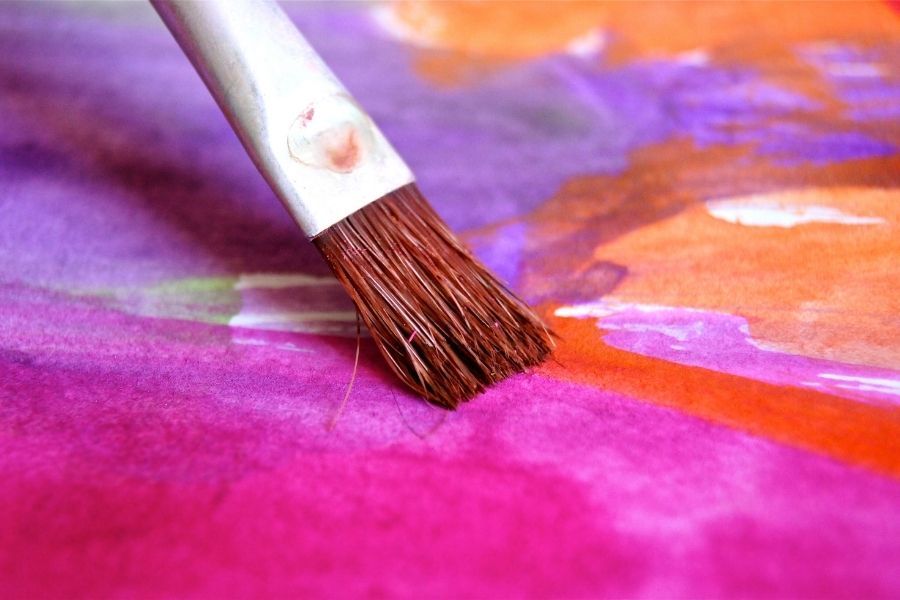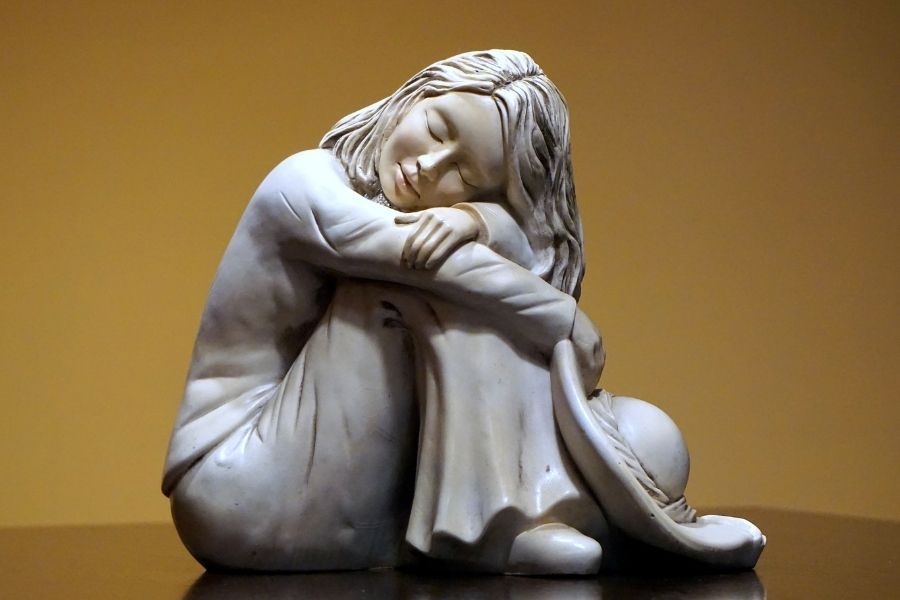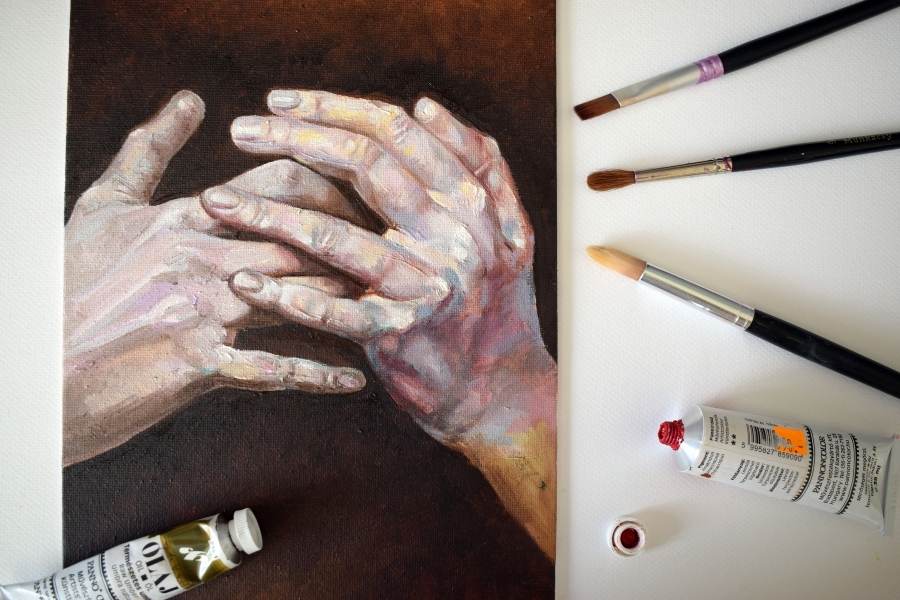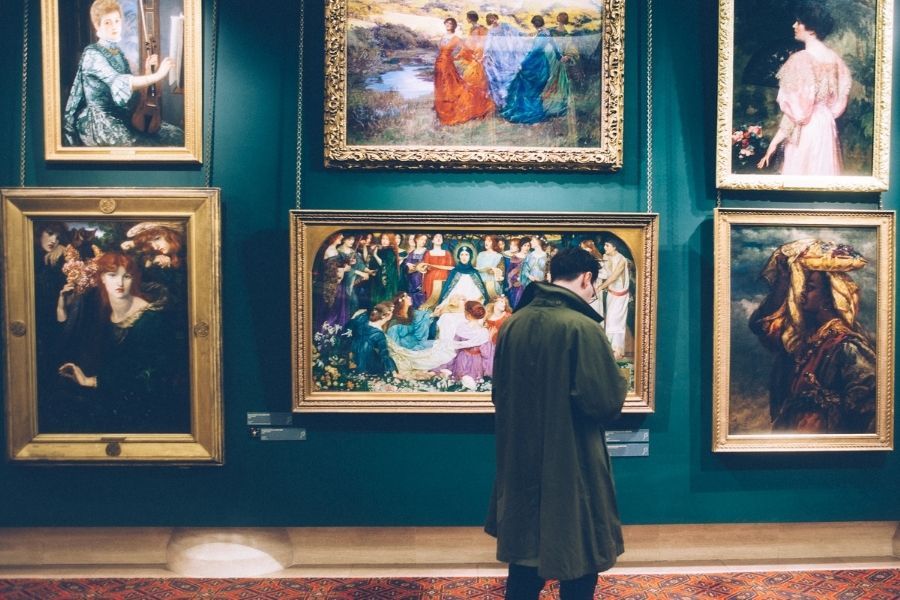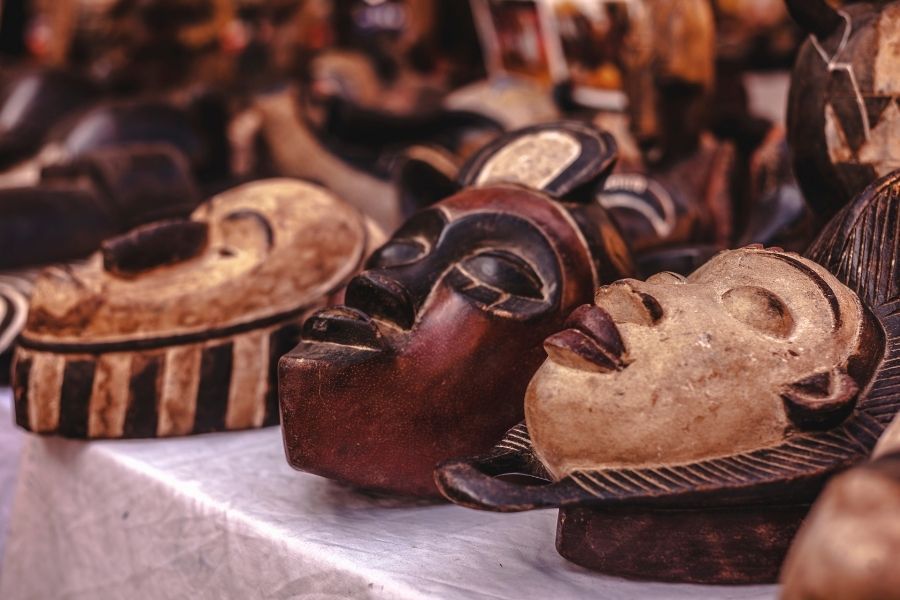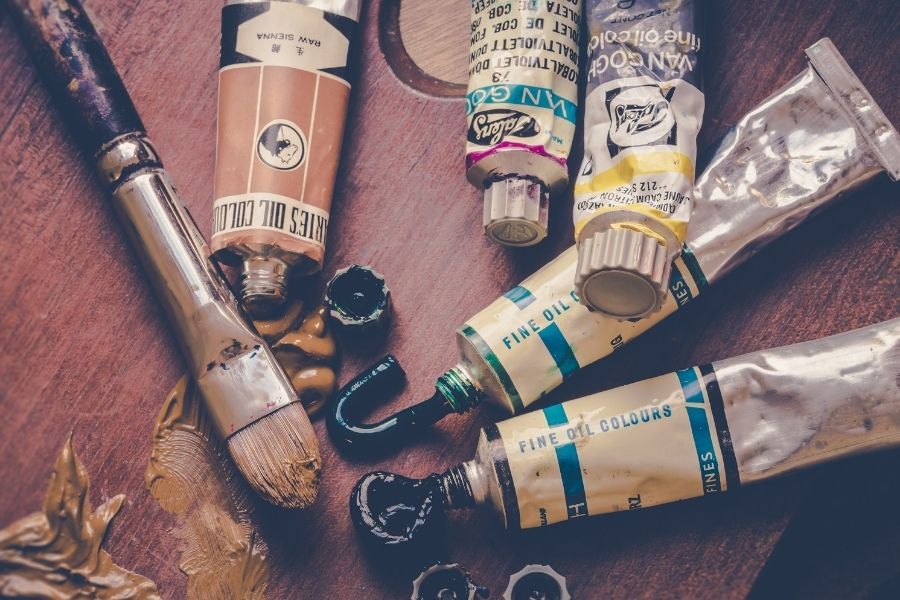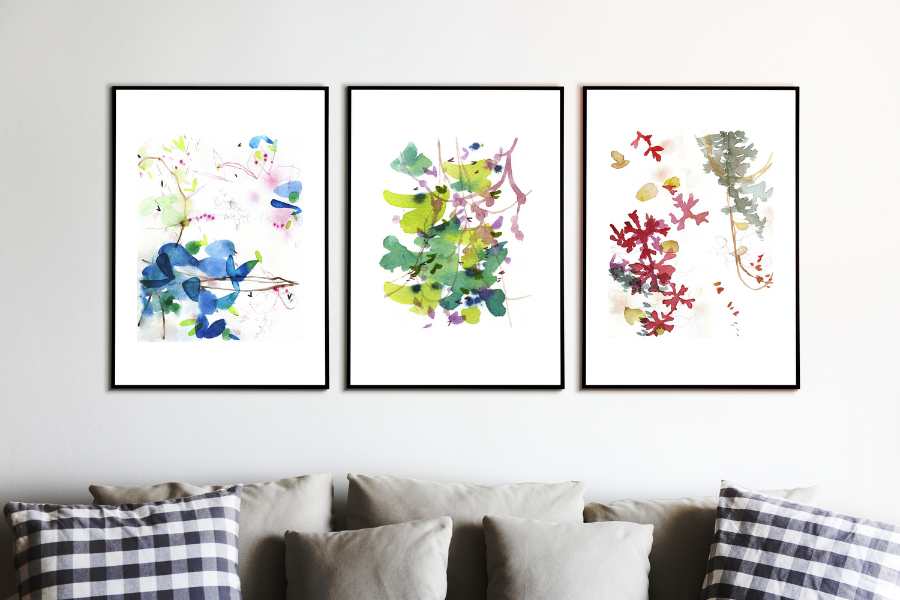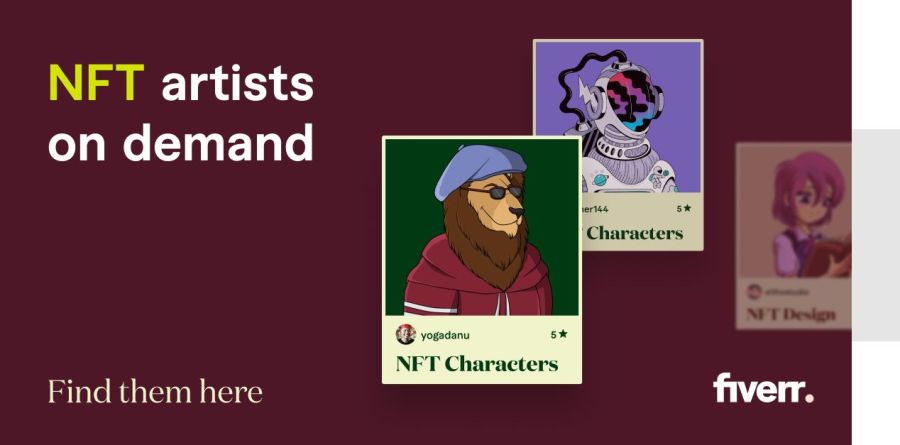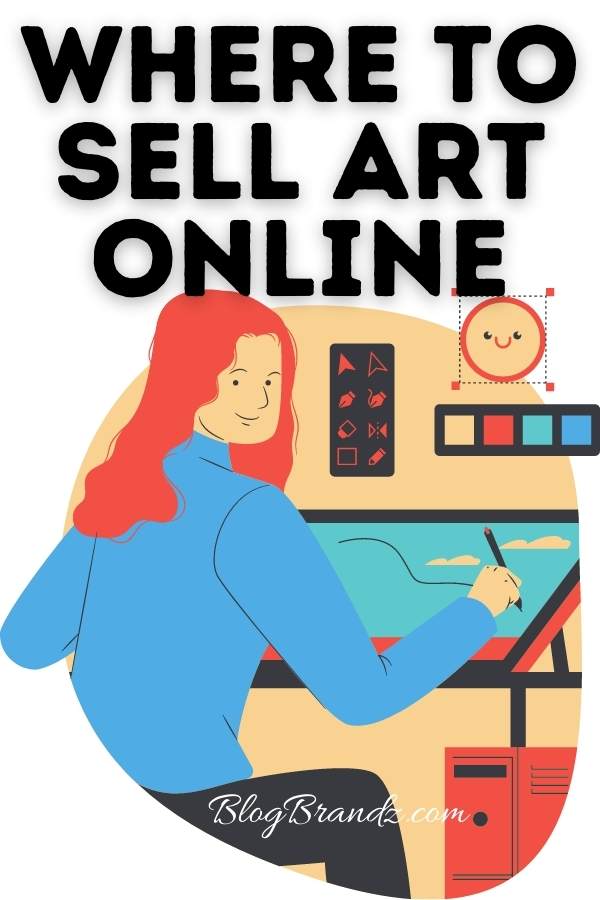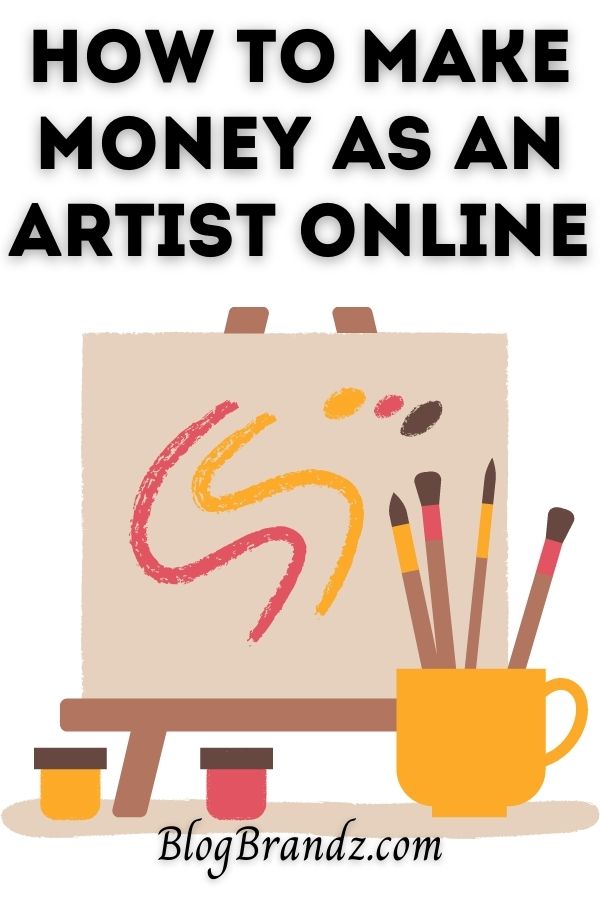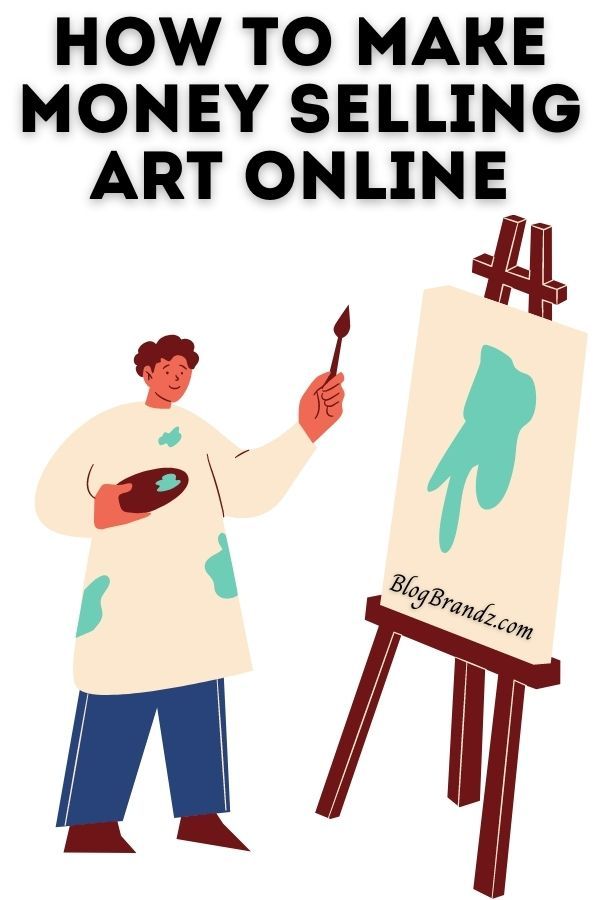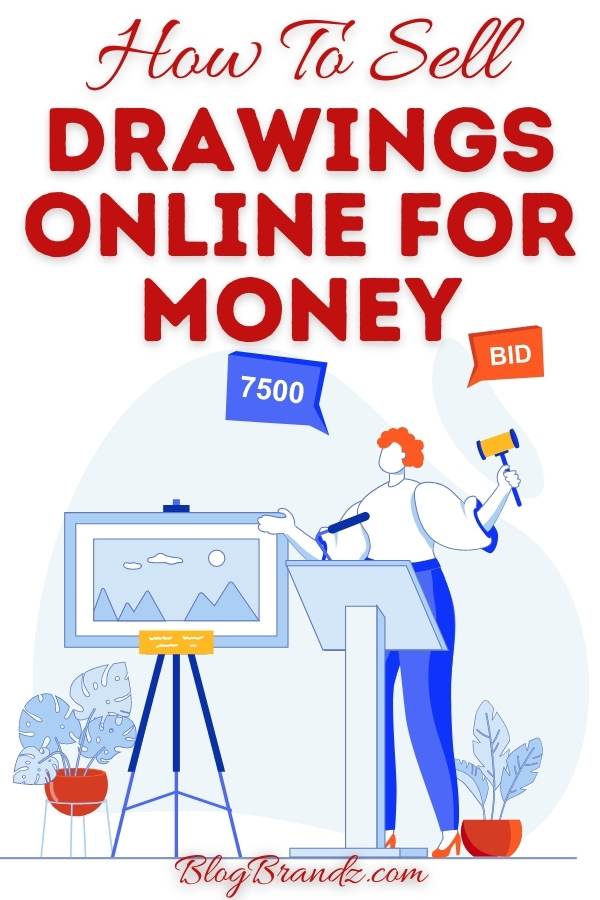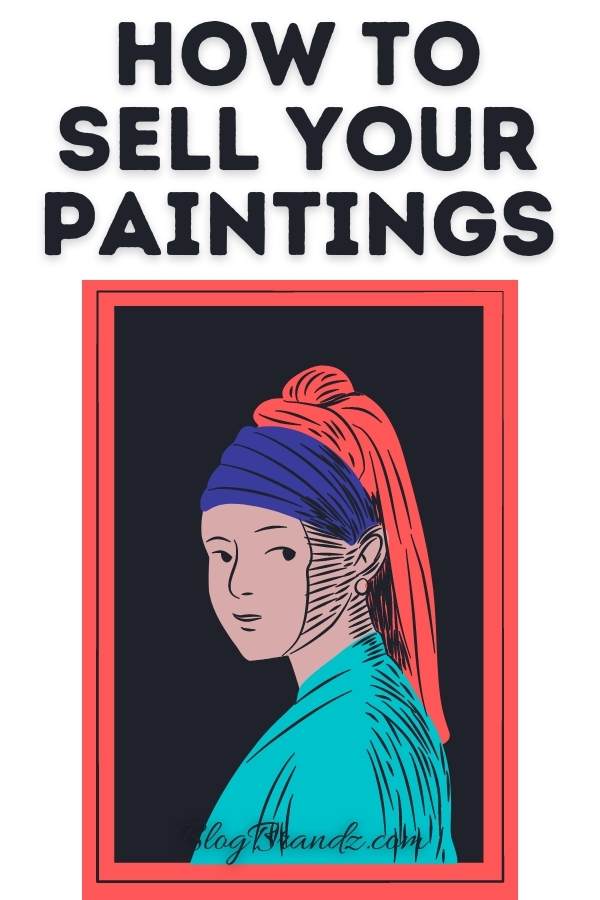
Want to learn how to sell art online and make money? Learn why, where, and how to sell your art online so you can succeed and prosper as an artist.
With the advent of the Metaverse and NFTs, it’s now the era of creators, artists, and writers who look to gain more from their art than just being a hobby.
Of course, most artists don’t want to pull off outrageous stunts like Salvatore Garau, the Italian artist who sold an invisible sculpture for $18,000.
But even if you don’t end up selling digital art for millions like the digital artist, Beeple (whose NFT sold for 69 million dollars), you can still make a lot of money selling paintings and other artworks online.
If you want to sell art online and are not sure how to get started, this article will help you learn how to sell your paintings or any other artwork you create, online.
Whether you want to sell digital art online, sell drawings online for money, sell prints online, sell sculptures, or any other form of art, the first step is to garner interest in your work among art buyers and collectors.
To do this, you need to learn art marketing and promotional skills, which will help you start earning a living from your artistic output. There are several ways to do this, and the best approach depends on what type of art you create and what kind of audience you want to reach.
In this post, we’ll go over the basics you need to know how to sell your art online. We’ll explore some of the different options for selling art online, from using existing marketplaces to creating your own website.
We’ll offer tips on setting up an eCommerce website, marketing your artwork, and building a customer base. We’ll also provide tips on building an artist’s website that sells.
Whether you’re a seasoned artist or just starting out as a painter, sculptor, photographer, or any other type of creator, read on to learn why, where, and how to sell art online and make money doing what you love.
Contents
Why sell art online?
Selling art online has helped many artists get access to art marketplaces and selling tools that traditional art markets don’t offer. Here are some reasons to sell art online:
- Reach a global audience
When you sell art online, you can reach a global audience of potential art buyers. It gives you a much wider audience, and you’re no longer limited to selling only to people who live near you or buyers who happen to see your artwork in person.
You can reach art collectors and art lovers all over the world, which can result in earning higher prices and more visibility for your work.
- Buyers can buy conveniently 24/7
When you sell art online, you can sell 24/7 without having to rely on gallery hours or brick-and-mortar locations. It’s more convenient for both you and the art buyer since they can purchase your work without having to travel and see it in person.
- Keep more of the profits
Selling art online gives you the flexibility to set your own prices and manage your own inventory, so you can control your own terms of sale.
Because there are no physical storefronts or overhead costs associated with selling art online, you can keep more of the profits for yourself.
- Build a relationship with your customers
When you sell art online, you can build a direct relationship with your buyers and connect with customers, which can be very rewarding personally and professionally.
What types of art sell well online?
Several art forms sell well online, including abstract paintings, landscapes, sculptures, and photographs. In terms of specific genres, abstract art and landscape paintings tend to be popular among buyers. Other popular genres include folk art, modern art, digital art, and street art.
Other factors that can affect how well a piece of art sells online include the artist’s reputation and the quality of the image or video. Many people are willing to pay top dollar for high-quality pieces that they can enjoy in their homes or offices.
If you’re an artist looking to sell your work online, it’s important to do your research and choose a platform that will give you the best exposure to potential buyers.
Some artists find success by marketing themselves and their work through social media platforms. To reach a wider audience, some artists also sell their work through online galleries or eCommerce websites.
In your quest to learn how to sell art online and make money, the best way to choose a subject for artwork is to explore the most popular art trends, and then create your own unique pieces inspired by them.
This way, you’re not just following the trend but infusing it with your personal style, ensuring that your art resonates with you as an artist.
How to take pictures of your artwork
If you’re selling digital artwork, you can skip this section. But if you’re selling paintings, sculptures, or any other forms of art, there are a few things you can do to take great pictures of your art.
Here’s a list of tips for taking pictures of your art:
- Make sure the lighting is good
Use a well-lit area, preferably with natural light, which is best. If you’re using artificial light, make sure it mimics natural light and is bright enough, but not too harsh.
When using a flash, position it off to the side so that it doesn’t create a glare on the artwork.
- Keep the camera steady
Use a tripod or place your camera on a stable surface to keep the camera steady. You don’t want your pictures to be blurry.
- Use a clean background
Make sure the background is clean and simple so that it doesn’t distract from the artwork.
- Make sure you get all the details
Get close to your artwork so that it fills most of the frame, and the details are visible in the picture. If you’re using a digital camera, use the highest resolution possible.
- Experiment with different angles & perspectives
Take multiple pictures from different angles, so you have plenty of options to choose from later. Sometimes the most unexpected angle can give your art a whole new look.
- Edit the photos afterward
Edit the photos afterward to enhance the colors and contrast if necessary. Crop out any unwanted areas and adjust the brightness or contrast if required.
- Use mockups to showcase your artwork
You can create mockups that showcase your artwork as it will be displayed in the buyer’s home or in a gallery. Mockups give art buyers a better idea of the look and feel of artworks in their daily lives.
How to write your artist biography
There’s no perfect formula for creating an artist biography. However, there are some basic steps you can follow to make sure your biography is informative, engaging, interesting, and well-written so that you can sell art in art galleries and museum shops.
It should highlight the artist’s achievements and professional accomplishments while also providing a glimpse into their personal life. A good biography will make readers feel like they know the artist and will leave them wanting to learn more.
Start by introducing yourself as an artist in a way that captures the reader’s attention. For example, you might begin by sharing a brief anecdote about how you became interested in your artistic pursuit.
Provide some background information about your personal life and artistic journey. It is important to include the story of the artist’s personal life, as the impact of art is emotional, and stories that make an emotional impact sell more effectively than facts.
This should include the artist’s education and training, as well as their professional career highlights and any significant accomplishments, major awards, or honors the artist has received, as well as any major influences that have shaped their work.
Here’s a list of facts to include:
- Name and date of birth
- Primary artistic influences
- Education and training
- Key exhibits and awards
- Professional Affiliations
- Selected bibliography or discography
Finally, conclude your artist’s biography with a look at the artist’s vision, future plans, and goals. This could include upcoming projects, events, or exhibitions being planned.
How to set up your own art marketplace
The easiest way to set up your own art marketplace and sell artwork online is to open your own Etsy digital art store. Selling printables on Etsy is one route that most successful artists recommend as the best place to sell art online.
If you don’t want to start on Etsy, there are other art-selling websites to sell art, such as RedBubble, where you can sell print-on-demand products featuring your artwork without any upfront fees.
However, if you don’t want to pay fees to any of these art marketplaces, you can set up your own art marketplace online using one of these eCommerce platforms and solutions.
7 art marketing & art promotion tips for artists
Learn 7 tips to create and sell art and learn the art marketing and art promotion skills you need to succeed as a successful artist.
- Do your market research
Before you create any art at all, spend the time to do your market research. One of the biggest reasons that artists fail in their journey to become successful artists is a lack of understanding of what the market wants.
Don’t assume you know everything and that what you create is what your audience wants. See what’s on offer and, more to the point, what is selling. Art markets are full of artworks that don’t sell. Understand what sells best, why, and to whom.
Successful artists recommend using tools like Google Trends and Amazon bestseller lists to understand what sort of art is most popular and what sort of art sells online.
- Understand market trends
Remember that what you see at art sales is what was created for last season. Most art galleries stock prints for the mass market nowadays, so you need to know what’s coming next rather than what’s on show now.
Imagine taking inspiration from a style on display to return with a new offering, only to be told that it is now outdated.
Visit trade shows to see what the publishers, independents, and importers are offering next season’s market. Even this will put you a step behind as the artists on display there are already working on next season’s ideas.
However, by taking guidance from the trade show, you can at least sell to the art galleries or art buyers armed with colors and themes in the current context.
Most importantly, talk to the publishers about your work and ask them about the process of presenting yourself for consideration.
- Build relationships with art gallery owners
If you’re satisfied with selling your work as “original only,” you will need to form relationships with good and reputable galleries. The value of art is in its perception by the viewer.
For example, if you hang your work in an exclusive art gallery, you can expect to command a much higher price than in your local town or side street, so aim high and get the best wall space you can.
Talk to several art gallery owners and listen to what they say. Most will be honest about your work and tell you exactly how likely it is to sell in their establishment.
Wall space is valuable, so they won’t waste it. You will need thick skin at times, so be prepared for harsh criticism. No matter who you are, some will love your work while others will hate it.
Discuss a fair retail price based on a fair price for you and the art gallery. If you’re happy with a price, don’t flinch when the Gallery says they will sell it for maybe over double your price.
They have to charge tax for a start, then cover all their expenses and actually find you a buyer before they see any profit for their trouble. So, don’t begrudge them their share.
The alternative to showing your artwork in galleries is selling digital art on Etsy or using your own online eCommerce art marketplace to sell your art.
As mentioned above, there are many benefits to selling art online rather than in galleries and other traditional options.
- Build relationships with art buyers
Wherever your work is on show, make an effort to accompany it so you can talk to prospective customers. Art buyers love to meet the artist in person, and you can do yourself a great deal of good by putting in an appearance, if only at weekends.
Talk to the art gallery about this as they are sure to welcome such proposals. If you also plan on selling prints on Etsy or on your own eCommerce store, make use of every opportunity to gain exposure and connect with art buyers.
- Adopt a theme for each art collection
When you create new works, try and adopt a theme for a collection. Single artworks do little to help the buying public form an opinion about you or your work.
Some art collectors want to find an artist to collect their artworks, so unless they can see more than one example of your work, they will find this difficult to do.
So, don’t settle for one painting. Aim for at least three or four in an art series that connects to your perfect audience. It will do much for your credibility and will considerably assist your success.
- Learn about art storytelling
Whenever you exhibit your artwork for sale, make sure each of them is accompanied by a Title and a Story. Your information will make them an “informed buyer” and allow them to impress their friends when they come to call.
The buying public loves a compelling story as it helps them understand your work better, gain more from the imagery, get the background information, and have a good subconscious reason for purchasing your artwork.
According to Craig Alexander, whose course, The Thriving Artist Method, teaches artists how to master art story selling like a pro:
“You need to write an emotionally intense story around the picture. The story itself is 80% of what sells the art! As crazy as this sounds, the quality and emotional intensity of the story will drive sales (or no sales) more than any single element, by far.”
In the Stories That Sell Course, you’ll learn how to write content that makes your audience nod their heads and open their wallets while staying true to your own voice.
If you want to create writing that lights a fire in your customer and gets the results you need, this course will show you exactly how it’s done.
- Have integrity and originality
The biggest mistake artists make is to try and be something they are not. Painting like Picasso or Van Gogh only makes you a poor imitator, so don’t try to be like them. Famous artists are known as much for creating their own style as they are for any integral artistic ability.
The first rule of creativity is to be true unto yourself, unsuppressed by the need to conform to what others expect or may perceive as art. If you do not allow yourself this right of expression, you will rarely find joy in creating art.
Of course, it goes without saying that, to make money as an artist, you must be able to find a commercial way of harnessing your talent that will offer you a better chance to support your art until such time as your own style and natural talent are recognized in their own right.
6 artist website tips for selling art online
If you plan to create your own artist website to sell your art online, remember that there are thousands of art-selling websites today, and you need to stand out and be memorable in a good way.
- Avoid long presentations & advertisements
Avoid incorporating long multimedia presentations into your websites. There’s nothing more frustrating than arriving at a website and waiting for a huge multimedia presentation to download and play.
You may think it adds something to your work, but in all actuality, it only frustrates impatient internet users who don’t have super-fast internet connections.
Many users access your artist website on mobile devices, and if they have to wait for something to download, they will simply leave.
Also, avoid featuring unrelated banner ads or advertising on your artist’s website. This is simply a distraction that is sending visitors away from your website.
If you’re going to place banner ads on your website, don’t make them the very first thing they see when they arrive on your home page, and make sure they’re related to the theme of your website and are helpful to your visitors.
Also, keep in mind that don’t have to do all these things yourself. It’s always easier and better to hire a professional website designer to help you create a responsive website, fast-loading, and search engine friendly.
- Grab your visitor’s attention right away
You need to grab your website visitor’s attention right away. This means putting your most important information near the top of your website, in plain sight of your visitors.
Your goal is to draw your website visitors to your site immediately with a compelling headline so that they stay long enough to check out what you have to offer.
Keep the website navigation consistent throughout your entire site. This means having the same navigation links in the same order on every page of your website.
Your goal is to make it as easy as possible for your visitors to get from one place to the next, not to confuse them. Make sure your visitors can easily contact you by placing a link to a contact page on every page of your site.
- Use testimonials to sell
If you have customer testimonials, use them to boost sales by highlighting a few of them on your home page in clear view.
Testimonials are awesome sales tools that are proven to increase sales. Potential buyers love to hear good reviews about products they’re about to purchase.
If you don’t have testimonials yet, contact former customers and ask if they could provide feedback on the artworks they purchased.
Make sure they know how you plan to use their testimonial and ask if you can cite their name when you publish it on your website.
- Send out a newsletter regularly
Once you draw in visitors, you must direct them to take action. Many website visitors usually leave without making a purchase unless you ask them to subscribe to your newsletter and follow up with them.
If you don’t have a method for collecting your visitors’ email addresses, you may be losing sales. So start an opt-in newsletter and collect as many email addresses as possible so that you can follow up with your visitors.
You could send out an announcement whenever you have new artwork for sale or a newsletter about artists and the art world. If you regularly attend art or craft shows, you could send out an email and let your subscribers know when and where the next one is.
You could send out surveys or questionnaires to your list to get a better idea about the type of artwork they’re interested in purchasing. You can also write a regular blog about your travels or life experiences and how they inspired your artwork.
As most artists don’t have the time to do all this themselves, it’s best to hire a virtual assistant to help you send out your newsletter and keep your website updated.
- Create a good website user experience
When you’re uploading images of your artwork to your website, always use thumbnails that visitors can click on to show a larger image. This will allow your web pages to load quickly.
Choose a basic color scheme and only one or two different fonts. Don’t go overboard on color and use too many different fonts, or your site will look out of balance and amateurish.
Use a light background, preferably white, with dark text, preferably black. Don’t use images or textures for your background.
This makes it difficult for your visitor to read the text on your site. Avoid animated graphics and scrolling or flashing text as it only distracts your visitors.
Make sure your site works in all major browsers and on all devices. Lastly, make your website personal. Speak to your visitors. Let them know who you are and what your art is all about.
Educate and enlighten them. Include a step-by-step article or video on how you create your work. When people have more of a connection with you and your art, they will be more comfortable buying from you.
- Make it easy for website visitors to buy your artwork
Once you set up an eCommerce store on your website, ensure that you have a variety of different payment options for your customers, especially payment by credit card.
Studies have shown that sites that accept credit card payments have significantly more sales. You can use a service like PayPal to accept credit cards from your website as it’s free and easy to set up.
Include prices on all of your products. If people have to contact you to find out the price of something, they will more often than not leave and look elsewhere.
Make sure you have detailed purchasing and shipping instructions in place and offer a good refund policy. When your customer receives your artwork, it may not be what they anticipated.
By having a good refund policy upfront, you will gain your customer’s trust, and they will be more comfortable making a purchase, especially if they’re parting with a lot of money.
Include a Privacy Policy that clearly states what you do with users’ personal information – what sort of information you collect from your visitors, what you do with that information, and whether you share it with anyone.
Internet users are somewhat reluctant to part with personal information, so it’s your job to make them feel at ease when they use your website.
You can find lawyer-approved legal templates for all your website’s legal agreements, including a Terms of Use section that section outlines the terms and conditions for using your website.
For instance, you may want to restrict visitors from copying or reproducing the images on your website. You would put that in your Terms of Use section.
Art business courses & books
I hope these tips on how to sell art online were useful in helping you learn how to make money as an artist online. These art business courses and tutorials will help you a full-time artist and sell your own art online.
- Sell Art Online Masterclass
- Sell Your Art Masterclass
- Art Business Course
- Start & Run An Art Teaching Business
- 7 Steps To A Best Selling Art Series
- Mini Bootcamp: Get Your Artwork Exhibited
- Write a Great Artist Bio & Sell Your Art in Galleries
- A Step-by-Step Guide to Art Licensing: Sell Your First Piece
- Art Licensing Success: How to Make Money with Your Art
- Art Photography: How to Photograph Your Art & illustrations
- Photoshop for Artists: Digitize, Present, Monetize Your Art
- Web Design for Artists: Selling Your Art Work Online
- How to Sell Printables On Etsy & Market Them On Pinterest
- Procreate: Digital Art, Illustration, Animation on Your iPad
- How to Sell Your Art Online
- Making It in the Art World
- Art, Inc.: Building Your Career as an Artist
- NFT Artist Masterclass on Udemy
- Learn All About NFTs & The Metaverse For Creators
- Devon Rodriguez Painting MasterClass
- Jeff Koons MasterClass on Art and Creativity
- Art MasterClass by Es Devlin on Turning Ideas Into Art
- Futura’s Spray-Painting & Abstract Art MasterClass
- David Carson’s Graphic Design MasterClass
- Best MasterClasses to Learn Art, Painting, Photography & Design
© 2022 – 2024, Priya Florence Shah. All rights reserved.
Priya Florence Shah is a bestselling author and an award-winning blogger. Check out her book on emotional self-care for women. Priya writes short stories and poetry and chills with her two-legged and four-legged kids in her spare time.
Discover more from Business & Branding Tips
Subscribe to get the latest posts sent to your email.



